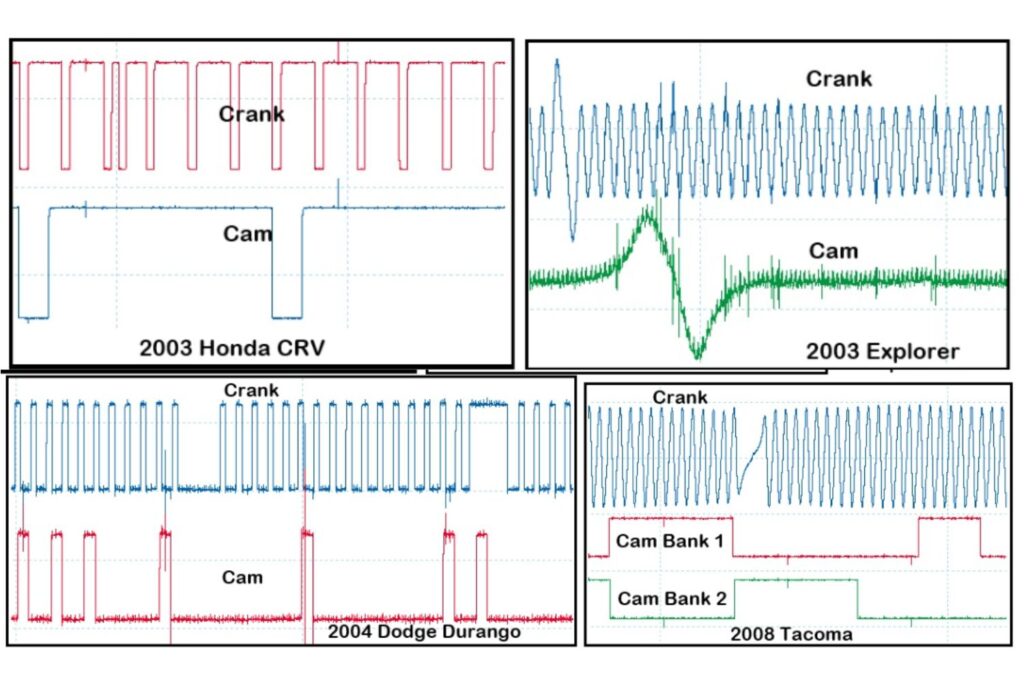Your vehicle utilizes several sensors to keep the engine running properly. The crankshaft position sensor (CKP) and camshaft position sensor (CMP) are critical for proper engine function. However, over time, these sensors can fail. When they do, your engine might have issues such as a check engine light, engine misfires, increased fuel consumption, and an engine that cranks but refuses to start.
A lot of components can cause these issues. Hence, testing the CKP and CMP sensors is critical to rule them out as the source of these problems.
What Do the Camshaft and Crankshaft Position Sensors Do?
The CMP and CKP sensors can detect the speed and position of their corresponding parts. The vehicle’s computer or powertrain control module (PCM) needs this information to control the spark, fuel injection, and variable valve timing.
A piston’s stroke has four stages: intake, compression, power, and exhaust. Since the engine’s crankshaft is a rotating assembly connected to the pistons, the PCM can know each piston’s status by looking at the crankshaft’s position.
Meanwhile, the camshaft is a rotating shaft that spins. As it spins, lobes on the shaft push a series of valves that allow air to enter and exit the combustion chamber. The PCM needs to know when the camshaft will open and close the engine’s valves. Hence, understanding its speed and position is crucial.
How Do the Camshaft and Crankshaft Position Sensors Work?
The CKP can detect the speed and position of the crankshaft using a magnet. The CKP sensor typically relies on a part called a harmonic balancer, which is essentially a notched wheel that spins alongside the crankshaft. As the wheel spins, the metal teeth pass over the CKP sensor, which uses an electromagnet to create the electrical signals sent to the PCM.
The CMP sensor operates in the same manner. However, the sensor reads the notches of a wheel or plate located at the end of the corresponding camshaft.
Tips on Testing the Camshaft and Crankshaft Position Sensors
Locate the Sensors
Wondering how to test the crankshaft position sensor? You first need to find it on your engine.
The crankshaft position sensor is typically located on the front of the engine block, near the engine timing chain cover. Sometimes, the crankshaft position sensor can be at the back of the engine, near the flywheel. You can easily spot the sensor because it usually has a wire sticking out.
Meanwhile, the camshaft position sensor is located in the front of the engine, near the camshaft gears. Once you’ve found the sensor, you can press on a tab that unlocks it and pull it out.

Look for Damage and Dirt
If there are any signs of damage on the sensor, then it’s an obvious sign that there’s something wrong and the sensor could be to blame for your vehicle’s engine issues. Inspect the sensor’s plastic body and the metal pins. If there are cracks or bent pins, then that could be a sign that the sensor has failed. At the same time, check the metal pins for oil or dirt that might affect the electric current.
Determine if the Sensors Are Two-Wire or Three-Wire Variants
CMP and CKP sensors both work similarly, which means you can use the same method to test both sensors. That said, there are CMP and CKP sensors with two or three wires and they’re tested differently.
You need to determine whether your sensor is a two-wire or three-wire variant by checking how many wires are sticking out of the sensor.
Two-wire sensors can create an electrical signal using a magnet. When the metal tooth pa

